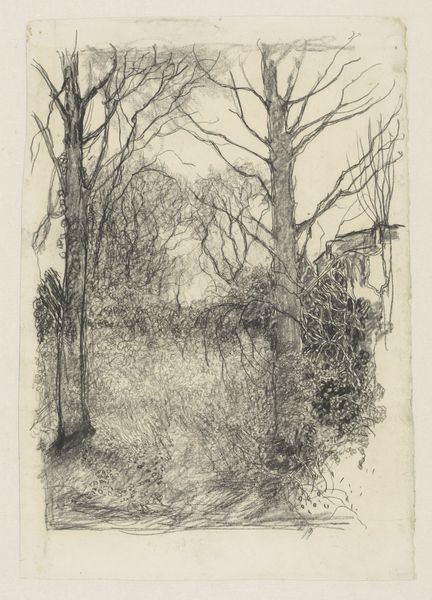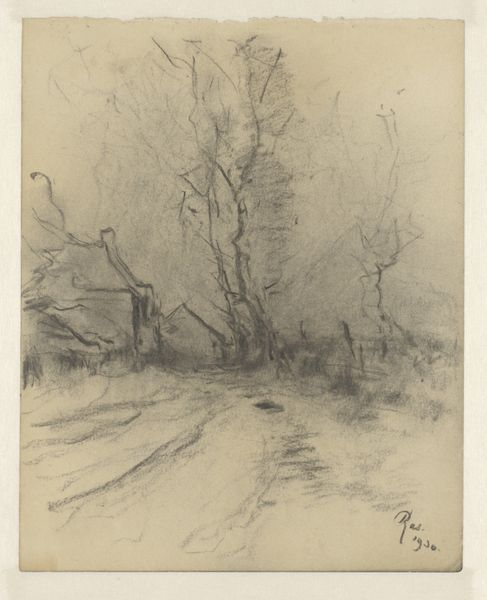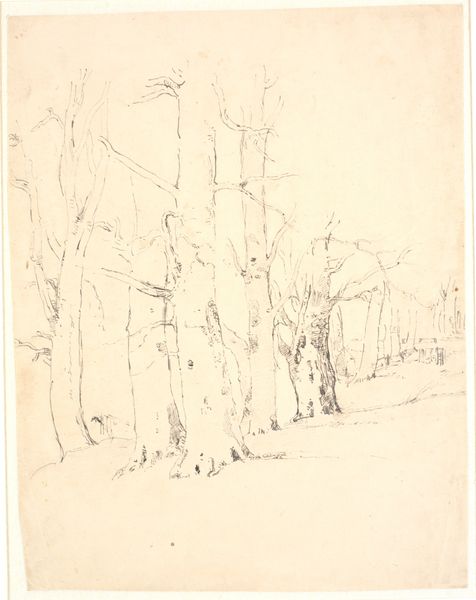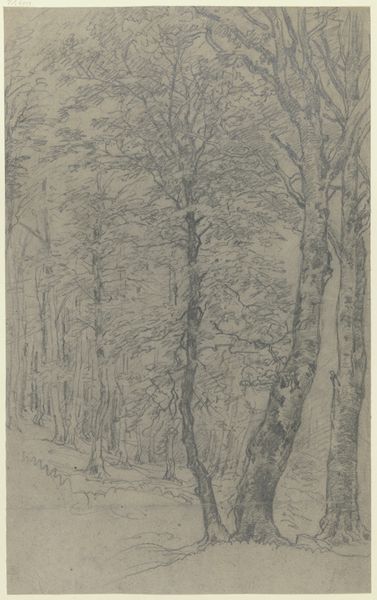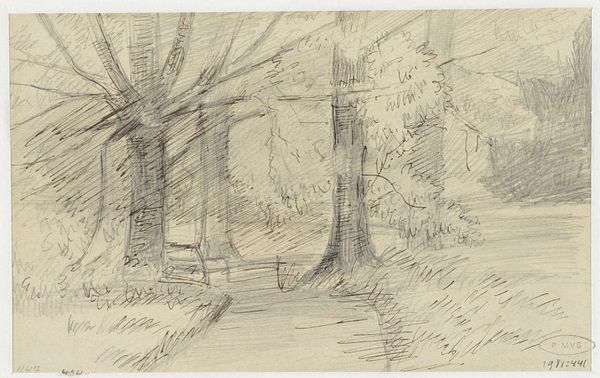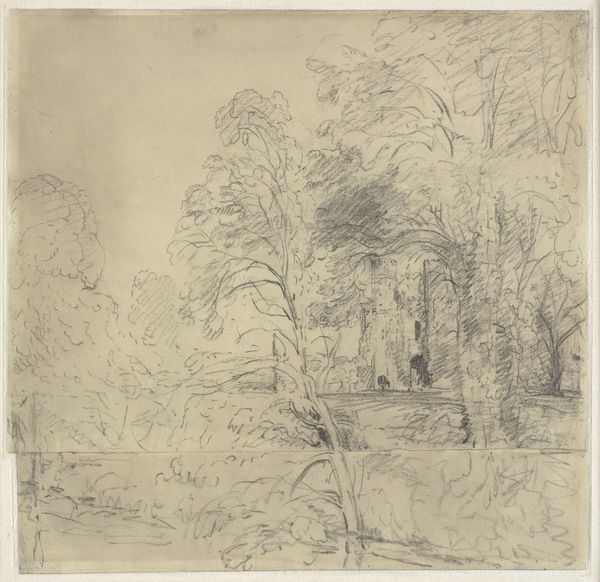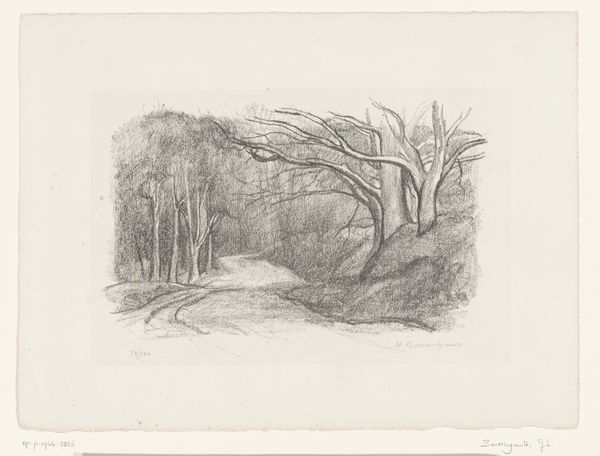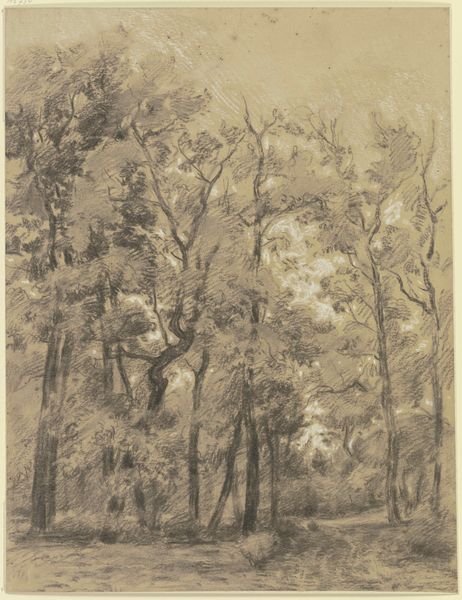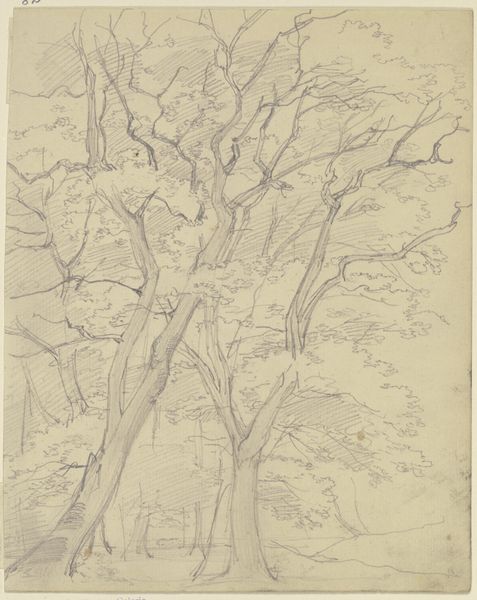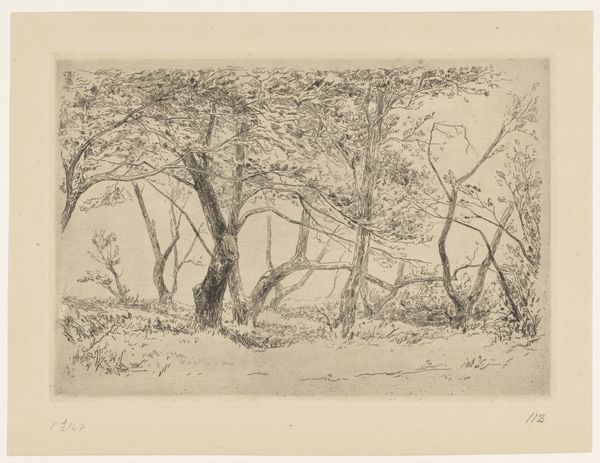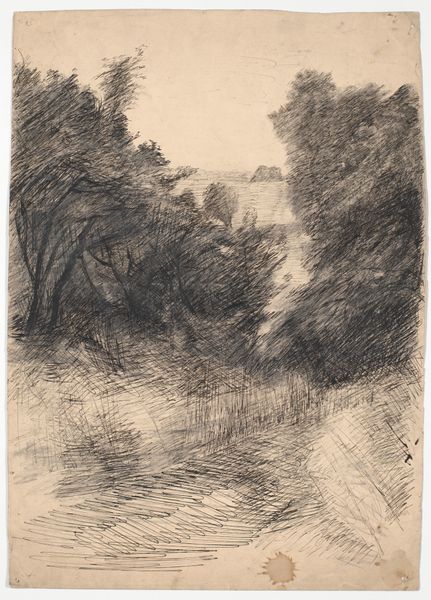
drawing, pencil, chalk, graphite
#
drawing
#
pencil sketch
#
landscape
#
pencil
#
chalk
#
graphite
Copyright: Public Domain
Editor: This delicate landscape drawing, "Trees at the edge of the forest," by Jakob Maurer, seems to be made with pencil, chalk, and graphite. It feels a bit melancholy, almost like a memory fading at the edges. What do you see in this piece? Curator: I see the enduring symbolism of the forest, particularly as it relates to the German Romantic tradition. Think of the forest as a powerful representation of the subconscious, a space of both refuge and peril. Note the starkness of the trees. Do they strike you as comforting, or something else? Editor: Something else, I think. They seem vulnerable somehow. Is that what gives the drawing its melancholy feel? Curator: Perhaps. Artists often use trees to represent life cycles, resilience, or even fragility. Here, the bare branches could symbolize winter, dormancy, or a kind of waiting. The forest's edge is important, too. It’s a liminal space, a boundary between the known and the unknown, civilization and wilderness. Maurer is playing with those cultural associations. Editor: So, the edge emphasizes the sense of transition or uncertainty? Curator: Precisely. And that pencil, chalk, and graphite create this atmospheric effect, mirroring how memories aren’t always crisp but more ethereal. It’s almost dreamlike. What lasting impression does this liminal space and those symbolic trees leave you with? Editor: I’ll remember that "edge" represents a mental state more than just the edge of the forest! Thanks, that was very helpful. Curator: Indeed. Thinking about how cultural memory shapes what we see is, for me, very exciting.
Comments
No comments
Be the first to comment and join the conversation on the ultimate creative platform.
